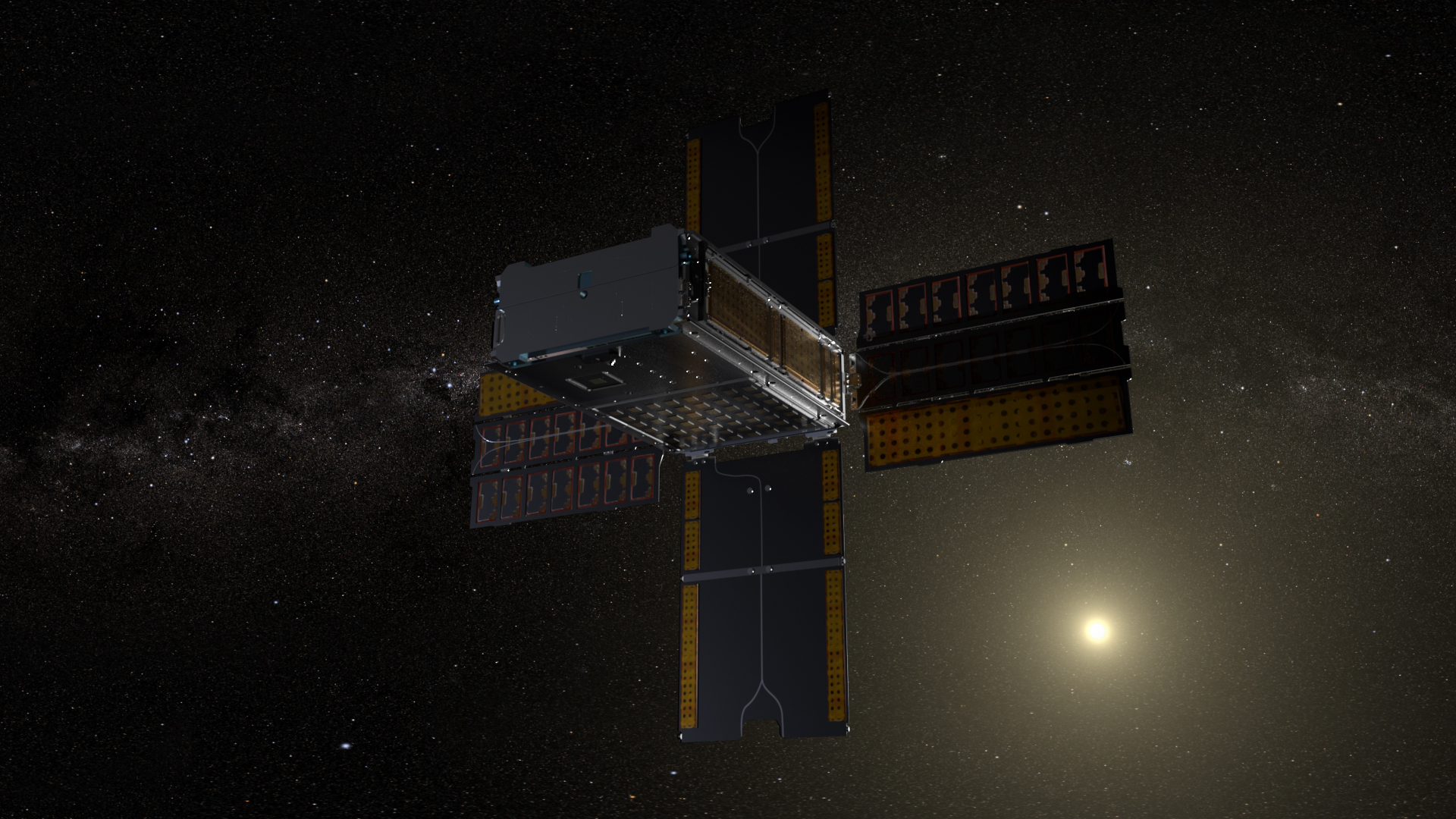Launched Nov. 16, 2022, aboard Artemis I, NASA’s BioSentinel – a shoebox-sized CubeSat – is over 13 million miles from Earth, in orbit around the Sun. It carries a miniature biotechnology laboratory designed to measure how living yeast cells respond to long-term exposure to space radiation. Although the spacecraft remains healthy and BioSentinel’s onboard radiation detector continues to collect data, the yeast did not activate as intended in order to gather observations on the impact of radiation on living yeast cells. However, NASA has decided to extend BioSentinel’s mission by up to an additional 18 months, or as late as November 2024, to continue collecting this valuable deep space radiation data in the unique, high-radiation environment beyond low Earth orbit.
“The BioSentinel mission operations team safely guided the spacecraft into heliocentric orbit and has operated the science instruments,” said Matthew Napoli, BioSentinel project manager at NASA’s Ames Research Center in California’s Silicon Valley. “In addition to the valuable radiation data, their work has demonstrated new technologies in the challenging deep space environment that will be leveraged in future missions.”
BioSentinel carries two experiment payloads including the BioSensor instrument to measure the effects of deep space radiation on living yeast, and a radiation detector instrument called a linear energy transfer spectrometer, which measures the type and dose of radiation hitting the spacecraft.
During the initial phase of the mission, which began in December 2022 and completed in April 2023, the BioSentinel team successfully operated the BioSensor hardware in deep space. They completed four experiments lasting two-weeks each but did not observe any yeast cell growth. The team determined that deep space radiation was not the cause of the inactive yeast cells, but that their lack of growth was likely due to the yeast expiring after extended storage time of the spacecraft ahead of launch.
“The Artemis I launch was a rare opportunity for BioSentinel to catch a ride to deep space,” said Napoli. “Flying as a secondary payload means there may be risks when you do not control your launch date, but NASA has gained valuable knowledge about deep space radiation and the performance of our technology.”
In addition to comparing the radiation data gathered in deep space with experiments performed in a lab at NASA Ames and aboard the International Space Station, BioSentinel’s science team is using the data to grow NASA’s knowledge about the radiation environment beyond low Earth orbit.
Solar Storms Ahead
Solar radiation events are expected to increase as we head into a solar maximum period in the Sun’s 11-year cycle. Activity on the Sun, such as giant eruptions like solar flares and coronal mass ejections are predicted to peak in 2025. These events send powerful bursts of energy and particles into space which causes the aurora, interferes with satellite signals, and poses a threat to astronauts in space.
“So far, BioSentinel has captured at least 10 solar events, including coronal mass ejections,” said Napoli. “The spacecraft operations team will try to capture as many solar events as possible, leading up to the peak in 2025.”
BioSentinel provides information to engineering teams developing future missions including NASA’s BioSensor-based Lunar Explorer Instrument for space biology Applications (LEIA) science suite. LEIA will bring yeast to the lunar surface to study its response to radiation and lunar gravity. NASA’s Commercial Lunar Payload Services initiative will deliver LEIA to the surface of the Moon in the 2026 timeframe.
Artemis missions at the Moon will prepare humans to travel on increasingly farther and longer-duration missions to destinations like Mars. Results from the BioSentinel and LEIA missions will fill critical gaps in knowledge about the health risks in deep space posed by space radiation.
“The BioSentinel team’s hard work has allowed us to capture deep space radiation measurements to better understand what crews will experience on future trips to Mars,” said Napoli.
Artemis I was the first integrated flight test of NASA’s Orion spacecraft, SLS (Space Launch System) rocket, and the associated ground systems, launching from the agency’s Kennedy Space Center in Cape Canaveral, Florida. In addition to Orion’s successful flight around the Moon, the mission provided the opportunity for 10 CubeSats to fly into deep space as secondary payloads. Artemis I paved the way for future flights to send humans to the Moon and back to Earth, beginning with Artemis II, for scientific discovery and to prepare for human missions to Mars.
For news media:
- Members of the news media interested in covering this topic should reach out to the NASA Ames newsroom.
NASA’s Ames Research Center in California’s Silicon Valley leads the science, hardware design and development of the BioSentinel mission. Partners include NASA’s Johnson Space Center in Houston and NASA’s Jet Propulsion Laboratory in Southern California. BioSentinel is funded by the Artemis Campaign Development Division within NASA’s Exploration Systems Development Mission Directorate at NASA headquarters in Washington.



























